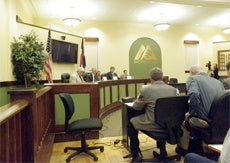 POCATELLO, ID — The BlueRibbon Coalition (BRC) today strongly criticized a U.S. Forest Service proposal to exempt major ground disturbing activities from environmental analysis and public comment.
POCATELLO, ID — The BlueRibbon Coalition (BRC) today strongly criticized a U.S. Forest Service proposal to exempt major ground disturbing activities from environmental analysis and public comment.
The U.S. Forest Service (USFS) today began accepting public comment on a proposed change in regulations that would allow certain activities, including road obliteration, to be exempt from any public comment or analysis under the National Environmental Policy Act (NEPA).
The proposed rule would allow the agency to bypass normal environmental review for projects that remove, replace or modify water control structures and remove debris and sediment after natural or human-caused events including floods, hurricanes and tornadoes. The rule would also exempt road decommissioning efforts such, as stabilizing slopes, restoring vegetation, blocking the entrance to the road, installing waterbars and removing culverts.
However, the proposal would also exempt major ground disturbing activities such as completely eliminating the road bed by restoring natural contours and slopes.
“Some of the agency’s recommendations make sense, but as usual, they go too far,” said Brian Hawthorne, Public Lands Policy Director for BRC. Hawthorne said, “If 40 years of NEPA has taught us anything it is that noble intentions don’t justify half-baked analysis. A bulldozer moving dirt is a bulldozer moving dirt. Environmental impacts don’t magically disappear because the source of sediment is called a restoration project.”
“This borderlines on willful mismanagement,” said Greg Mumm, BRC’s Executive Director. “The Forest Service is sitting on 20 to 40 million acres of beetle-killed fire hazard and the fuse is lit. Their priorities are out of whack.” Mumm said.
As an example, Mumm said that just in Colorado some 6.6 million acres are affected by the mountain bark beetle epidemic. The agency estimates that, over the next 10 years, an average of 100,000 trees will fall daily. Visitors to USFS lands are affected not only by the visual impacts, falling trees pose serious risk to human life and the infrastructure our rural communities rely on. Dead trees across the state have created heavy fuel loading which can result in intense, so-called “fatal wildfires.” Beetle-killed trees now threaten thousands of miles of roads, trails and developed recreation sites. Mumm said; “Exempting culvert removal is all well and good, but the agency crosses a line when, at the same time, they increase analysis on such things as maintaining safe power transmission corridors.”
Hawthorne also expressed frustration with the proposed changes. He noted that the USFS is saying the majority of issues associated with road and trail decommissioning arise from the initial decision whether to close a road or trail via the travel planning process. “That’s not our experience,” Hawthorne said. BRC has been urging the USFS to develop a streamlined procedure to allow public comment before any ground disturbing or road obliteration activities are proposed precisely because the travel planning is usually focused on recreational users of the Forest. Other users are often assured their access and activities could still continue under stipulations of their permit, lease or other agreement.
Hawthorne said few, if any, USFS travel planning projects get it right the first time. “Many travel planning projects we are aware of have been amended within one or two years after completion, and many have been amended even before the plan has been completely implemented on the ground.” It is quite likely that routes proposed for decommissioning will be necessary additions in future recreation and travel planning. Hawthorne said the fact the agency doesn’t want any public involvement means the agency probably doesn’t care about any potential recreational uses of these routes.